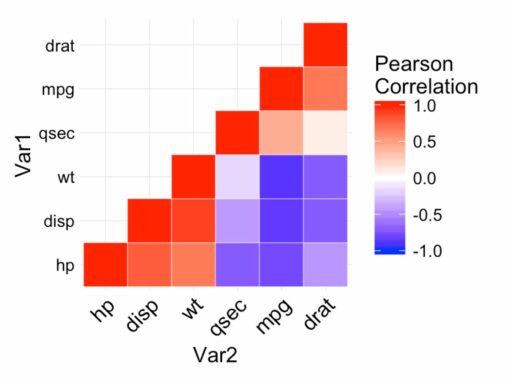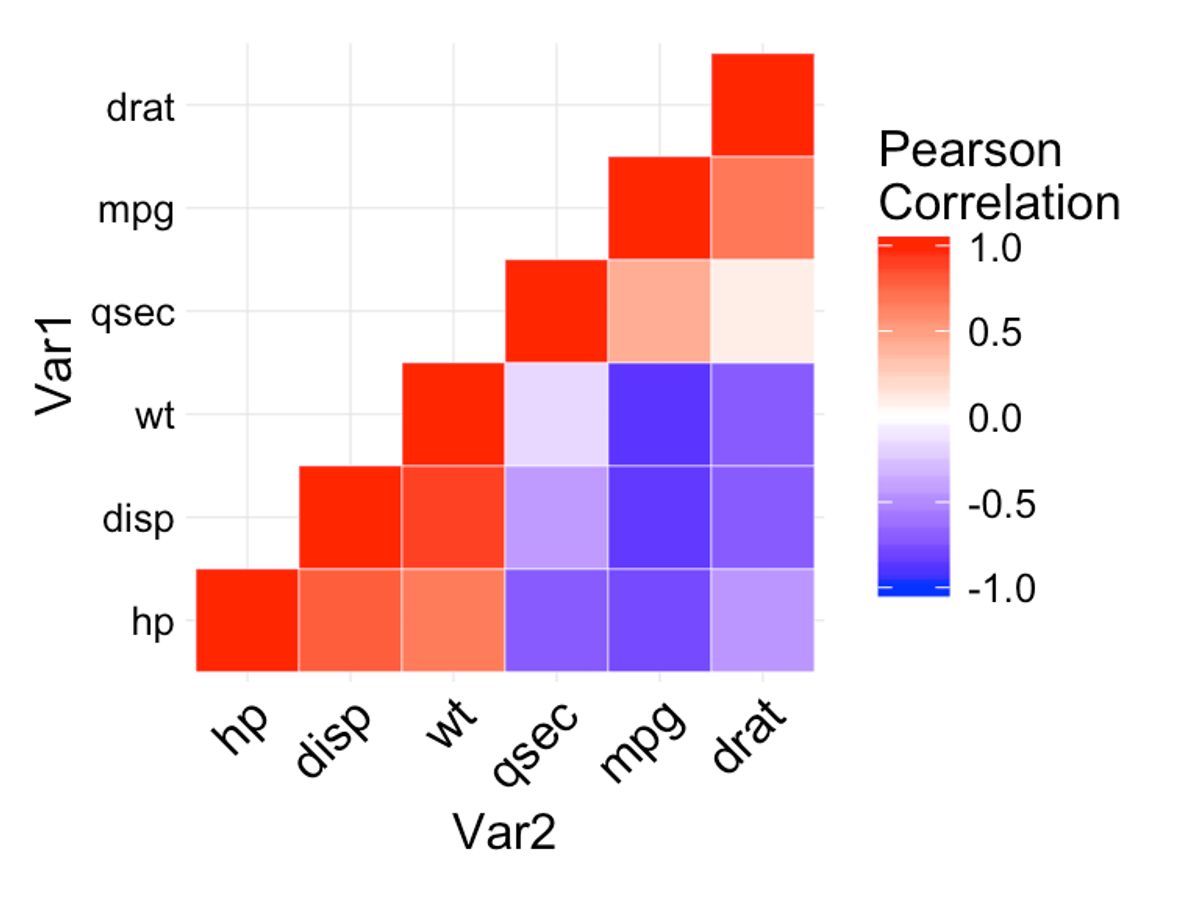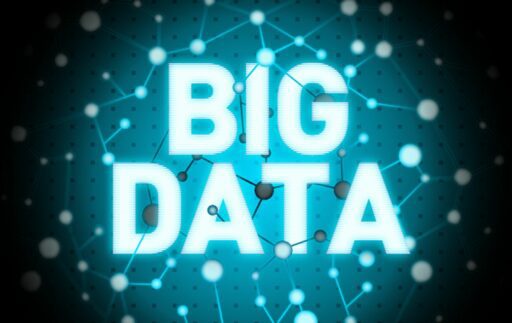Table of Contents
In the intricate tapestry of the English language, few debates stir as much discussion among grammarians as the singular versus plural nature of the word ‘data.’ This article, ‘Is ‘Data’ Singular or Plural? Unraveling the Grammatical Conundrum,’ aims to dissect this linguistic puzzle, exploring its historical roots, contemporary usage, and the impact of different academic fields on its interpretation. We will also delve into the broader implications for language evolution and the practical considerations for writers and editors navigating this grammatical ambiguity.
Key Takeaways
- The word ‘data’ has historically been plural but is increasingly used in the singular form, reflecting shifts in language and perception.
- Grammatical conventions are challenged by the use of ‘data’ in various contexts, requiring a nuanced understanding of its application.
- Academic and scientific communities influence the treatment of ‘data’ as singular or plural, often driven by the need for precision and clarity.
- Public opinion and language usage trends suggest a growing acceptance of ‘data’ as a singular noun, despite traditional grammatical rules.
- Writers and editors must balance grammatical correctness with evolving language norms to ensure clear and effective communication.
The Singular vs. Plural Debate

Defining ‘Data’ in Linguistic Terms
In the realm of linguistics, ‘data’ is a term that carries significant weight. It represents the raw information that linguists analyze to understand language patterns and usage. This information can be qualitative or quantitative, ranging from recorded speech to written texts.
- Qualitative data: Descriptive content, such as interviews or narratives.
- Quantitative data: Numerical information, such as frequency counts or statistical analyses.
The interpretation of ‘data’ in linguistic terms extends beyond mere numbers or words; it encapsulates the essence of communicative evidence that linguists use to draw conclusions about language.
The term ‘data’ itself is derived from the Latin word ‘datum,’ meaning ‘something given.’ In linguistic contexts, it is often treated as a plural noun, reflecting its origins. However, the modern usage of ‘data’ has evolved, leading to a debate on whether it should be considered singular or plural in different scenarios.
Historical Usage and Evolution
The term ‘data’ has undergone significant evolution since its inception. Originally derived from the Latin word ‘datum’, meaning ‘something given’, it has been part of the English language for centuries. Historically, ‘data’ was used in the plural form, reflecting its Latin roots where it served as the plural of ‘datum’.
Over time, the singular usage of ‘data’ has become increasingly common, particularly in everyday speech. This shift can be attributed to the natural tendency of languages to simplify and adapt to the needs of their speakers. The singular ‘data’ is now often used to refer to a collection of data points as a single entity.
It is suitable for both singular and plural contexts, emphasizing the individual pieces of information collected.
In academic and scientific discourse, however, the plural form ‘data were collected‘ is still prevalent, indicating the multiple pieces of information gathered during research or analysis.
Contemporary Perspectives
In the modern linguistic landscape, the term ‘data’ is often treated as a mass noun, despite its plural origins. This shift reflects a broader trend where traditional grammatical rules are adapted to suit the practicalities of everyday communication. Contemporary usage of ‘data’ varies widely, with some fields adhering to the plural form, while others have embraced the singular.
The fluidity of ‘data’ in contemporary discourse underscores the dynamic nature of language, where meaning and number are shaped by context and collective usage.
The debate over ‘data’ is not merely academic; it has real-world implications for how information is managed and understood. For instance, the protection of digitally stored ethnographic material from risks such as data hacking is a growing concern. This underscores the need for new approaches that reflect the evolving nature of data as both a concept and a tangible asset.
- The singular usage of ‘data’ aligns with the trend of simplifying language for clarity.
- Plural usage remains strong in academic and scientific communities.
- Context often dictates whether ‘data’ is treated as singular or plural.
Grammatical Rules and Exceptions

Standard Grammar Conventions
In the realm of standard grammar, the word ‘data’ is traditionally treated as a plural noun, with its singular counterpart being ‘datum.’ This convention stems from the word’s Latin origin, where ‘datum’ signifies ‘something given’ and ‘data’ is the plural form, meaning ‘things given.’ However, the adherence to this rule is not absolute, and variations in usage can be observed.
- ‘Datum’ is rarely used in everyday language or even in most academic and scientific contexts.
- ‘Data’ is often treated as a collective noun, similar to ‘information,’ which is considered singular.
- In formal writing, especially in scientific research, ‘data’ is still frequently used with plural verbs and pronouns.
The choice between singular and plural forms of ‘data’ can reflect the writer’s intent, whether they are emphasizing the individual units of information or the collective dataset.
The debate over ‘data’ as singular or plural is not merely a matter of grammar but also reflects the dynamic nature of language and its adaptation to the context of use. As such, writers and editors must be vigilant and consider the expectations of their audience and the norms of their respective fields when deciding how to treat ‘data.’
When ‘Data’ Breaks the Rules
In the realm of grammar, ‘data’ often defies the conventional rules, oscillating between singular and plural forms depending on various factors. The context in which ‘data’ is used plays a pivotal role in determining its grammatical number. For instance, in academic writing, ‘data’ is typically treated as plural, with sentences like ‘The data were analyzed.’ However, in everyday language, it’s not uncommon to hear ‘The data is ready.’ This divergence highlights the flexibility of ‘data’ in modern usage.
The fluidity of ‘data’ challenges strict grammatical norms and invites a more nuanced understanding of its application.
To illustrate the variability in the treatment of ‘data’, consider the following examples from different contexts:
- In scientific research: ‘The data support the hypothesis.’
- In business reports: ‘This data shows an increase in sales.’
- In technology discussions: ‘How much data is too much?’
These examples underscore the importance of context in determining whether ‘data’ is perceived as a collective singular entity or as discrete units of information.
The Role of Context in Determining Number
The question of whether ‘data’ is singular or plural is not merely a matter of grammatical dogma but also a reflection of the context in which the term is used. Contextual cues often guide the interpretation of ‘data’ as either a collective noun or a discrete enumeration of facts. For instance, in everyday conversation, ‘data’ might be treated as a singular mass entity, whereas in a scientific paper, it is more likely to be considered plural, referring to multiple pieces of information.
- In a business meeting, discussing ‘data’ as a singular concept may align with the view of data as an uncountable asset.
- Academic researchers often adhere to the plural usage, emphasizing the multiplicity of data points.
- In technology sectors, ‘data’ can swing between singular and plural depending on whether the focus is on data sets or individual records.
The flexibility of ‘data’ in response to context highlights the dynamic nature of language and the importance of audience awareness in communication. The choice between singular and plural forms can subtly influence the perceived meaning and the clarity of the message conveyed.
The Influence of Academic and Scientific Fields

Disciplinary Preferences for ‘Data’
The term ‘data’ exhibits a fascinating divergence in treatment across different academic and scientific disciplines. In the realm of computer science and information technology, ‘data’ is often treated as a plural noun, reflecting its Latin origin where ‘datum’ is the singular and ‘data’ the plural. Conversely, in the humanities and social sciences, ‘data’ is frequently used as a singular mass noun, similar to ‘information’ or ‘evidence’.
- Computer Science & IT: Plural
- Humanities & Social Sciences: Singular
This disciplinary divide not only highlights the flexibility of language but also the influence of subject-specific conventions on grammatical choices. > The preference for singular or plural forms of ‘data’ can subtly shape the way information is presented and interpreted within academic texts, potentially affecting the clarity of research findings and arguments.
Impact of Technological Advancements
The rapid pace of technological advancements has had a profound impact on the use of the term ‘data’. Digital technologies and social media platforms have revolutionized the way we collect, analyze, and interpret data. The transition from analog to digital has not only increased the volume of data but also the speed at which it is processed.
Historically, the adoption of new technologies has often been swift and transformative. For example:
- It took seventeen years for the telegram to replace the Pony Express.
- Digital cameras supplanted Polaroid in just eight years.
- Video compact discs overtook videocassettes in a mere 13 years.
These examples illustrate the velocity of technological change and its influence on data handling. As a result, the argument for treating ‘data’ as plural has gained traction, emphasizing its collective nature.
The interplay between technology and data is undeniable. As we continue to innovate, the way we refer to ‘data’ may evolve to reflect its increasingly multifaceted role in our lives.
The Argument for Plural Consistency
Advocates for treating ‘data’ as a plural noun argue that consistency with its Latin origin, where ‘datum’ is singular and ‘data’ is plural, is crucial for clarity. This adherence to traditional grammar respects the word’s etymological roots and maintains a clear distinction between singular and plural forms.
In academic and scientific writing, where precision is paramount, the plural usage of ‘data’ aligns with the collective nature of datasets and research findings. Here, ‘data’ are seen not as a monolithic entity but as individual units of information that collectively form a body of knowledge.
The insistence on plural consistency underscores the multifaceted nature of data as discrete, yet interconnected, pieces of information.
While the singular ‘data’ has gained traction in casual usage, the plural form remains the standard in formal contexts. This is reflected in style guides and journal requirements, which often specify the use of ‘data’ as a plural noun to avoid ambiguity and uphold scholarly rigor.
Language Evolution and User Perception

The Natural Shift in Language Over Time
The evolution of language is a testament to human adaptability and cultural exchange. Just as the parlor game ‘Telephone’ demonstrates how messages can morph when passed from person to person, languages transform as communities grow, migrate, and interact. The concept of ‘data’ as we understand it today has similarly undergone significant changes over time, reflecting shifts in usage and collective understanding.
The progression from a single common language to over six thousand distinct tongues on Planet Earth illustrates the dynamic nature of linguistic development. This process is not merely historical; it continues to shape modern languages and the terms we use within them. The word ‘data’ is no exception, evolving from its Latin roots to its current role in the digital age.
- The original language diversifies due to migration and interaction.
- New languages emerge, each with unique characteristics and vocabularies.
- Terms like ‘data’ adapt to fit the needs and contexts of their users.
The journey of ‘data’ from a strict plural form to its more flexible contemporary usage mirrors the broader patterns of language evolution. As societies advance technologically and academically, the language adapts to accommodate new concepts and modes of communication.
Surveying the Public: What Do People Think?
Public opinion on the grammatical number of ‘data’ is as varied as the word’s usage across different contexts. Surveys reveal a split in perception, with some firmly rooted in the traditional plural interpretation, while others lean towards a more modern, singular understanding. This divergence mirrors the flexibility seen in other collective nouns, such as ‘media’ and ‘team’, which can shift between singular and plural based on sentence meaning.
To better understand public sentiment, consider the following points:
- The influence of academic and scientific fields on public opinion
- The impact of technology and data-centric professions
- Generational differences in the acceptance of ‘data’ as singular or plural
The debate over ‘data’ is more than a linguistic puzzle; it reflects our evolving relationship with information in the digital age.
Ultimately, the public’s view on whether ‘data’ is singular or plural is influenced by personal experience, professional background, and exposure to different linguistic norms.
Predicting the Future of ‘Data’
As we stand on the precipice of technological evolution, the future of ‘data’ as a term remains intriguingly uncertain. The fluidity of language and the rapid pace of technological change suggest that ‘data’ may continue to evolve in its usage. The term has already shown remarkable flexibility, adapting to the needs of various disciplines and the public’s understanding.
In the realm of data science, business intelligence, and technology, the term ‘data’ is often treated as a plural noun, reflecting the multiplicity of individual units of information. However, as we integrate data more seamlessly into everyday language, a shift towards singular usage is possible, especially in casual contexts.
- Data science and analytics are increasingly shaping our world.
- The influence of programming languages like Python and R is significant.
- Careers in the data industry are evolving with the tools and applications used.
The challenge lies not in predicting the exact trajectory of ‘data,’ but in adapting to its linguistic journey while maintaining clarity and precision in communication.
Practical Implications for Writers and Editors

Guidelines for Professional Writing
In the realm of professional writing, the use of ‘data’ demands precision and adherence to the intended audience’s expectations. When in doubt, always consider the clarity and consistency of your message.
For writers and editors grappling with the ‘data’ dilemma, here are some practical tips:
- Refer to style guides specific to your field or publication.
- If ‘data’ is used with a singular verb, ensure it reads as a collective noun.
- When using ‘data’ with a plural verb, treat each datum as an individual unit.
- Maintain consistency throughout the document to avoid confusing the reader.
The choice between singular and plural forms of ‘data’ should not distract from the content’s substance. It is the writer’s responsibility to convey information effectively, regardless of grammatical debates.
Ultimately, the goal is to communicate clearly and effectively. Whether ‘data’ is treated as singular or plural, the key is to be intentional and transparent with your choice, providing a seamless reading experience for your audience.
Navigating Grammatical Ambiguity
In the realm of professional writing and editing, navigating grammatical ambiguity is a skill that can greatly enhance the clarity and precision of the text. When it comes to the word ‘data’, the decision to treat it as singular or plural must be made with careful consideration of the context and the intended audience.
Writers often face the challenge of choosing the right form of ‘data’ to maintain consistency and avoid confusion. Here are some strategies to help make that decision:
- Consider the audience and their expectations regarding the term ‘data’.
- Reflect on the formality of the document and the prevailing style guides in the industry.
- Analyze the sentence structure to determine if ‘data’ is functioning as a collective noun or as a reference to individual items.
In the end, the choice between singular and plural forms of ‘data’ should be guided by the desire to communicate effectively, rather than by rigid grammatical rules.
The exploration of data integration, analysis, and visualization in modern enterprises, including aspects like business intelligence, data security, and warehousing, often necessitates a clear stance on the term’s number to ensure precise communication, especially when discussing AI and Big Data applications.
The Importance of Clarity and Precision
In the realm of writing, clarity and precision are paramount. These qualities ensure that the message is conveyed without misinterpretation, fostering a clear understanding between the writer and the reader. Precision in writing eliminates ambiguity and confusion, allowing readers to grasp your ideas effortlessly.
Precision is not just about choosing the right words; it’s about conveying the right message in the simplest way possible.
For writers and editors, adhering to these principles is crucial, especially when dealing with complex subjects such as the use of ‘data’. A bulleted list can help to remember the key aspects of writing with clarity and precision:
- Use specific, concrete language.
- Avoid jargon and technical terms unless necessary.
- Be concise; remove unnecessary words.
- Structure your writing to guide the reader clearly through your argument or narrative.
Conclusion: Embracing the Complexity of ‘People’
In the intricate tapestry of the English language, the word ‘people’ serves as a prime example of grammatical flexibility. While traditionally recognized as the plural of ‘person’, our exploration reveals that ‘people’ can also embody a singular collective identity in certain contexts. This special case usage, often found in discussions of ethnic groups, nations, or communities, underscores the rich nuances of language. As we’ve seen, whether ‘people’ takes a singular or plural verb depends on whether the emphasis is on individual members or the group as a whole. Ultimately, the key takeaway is to remain contextually aware and appreciate the dynamic nature of English, which allows for such linguistic subtleties. By understanding and applying these nuances, we can enhance both our writing and our grasp of the language’s fascinating flexibility.
Frequently Asked Questions
Is the word ‘data’ considered singular or plural in English?
The word ‘data’ can be considered both singular and plural, depending on the context and convention. Traditionally, ‘data’ is the plural of ‘datum’ and takes plural verbs. However, in modern usage, it is often treated as a singular mass noun, especially in non-technical contexts.
How has the usage of ‘data’ evolved over time?
Historically, ‘data’ was used as a plural noun with plural verbs. Over time, its usage has shifted, and it is now commonly used as a singular noun in everyday language and certain fields, reflecting its treatment as a collective noun for information.
Why do some academic and scientific fields insist on using ‘data’ as a plural?
Many academic and scientific fields emphasize precision and adhere to traditional grammatical rules. Therefore, they continue to use ‘data’ as a plural to reflect its Latin origins and the idea that it represents multiple pieces of information.
Can the context determine whether ‘data’ is singular or plural?
Yes, the context often determines how ‘data’ is treated. In technical or formal writing, ‘data’ may be used with plural verbs, while in general discussions, it might be treated as a singular noun with a singular verb.
What should writers and editors consider when deciding to use ‘data’ as singular or plural?
Writers and editors should consider their audience, the formality of the text, and the conventions of their field. Clarity and consistency are key, so it’s important to choose a usage that aligns with the expectations of the readers and the context of the writing.
Is there a trend in the way ‘data’ is being used in modern English?
There is a trend towards treating ‘data’ as a singular noun in everyday language. However, in academic and scientific writing, the plural usage is still prevalent. Language evolves, so this trend may continue, with ‘data’ being increasingly accepted as singular.





